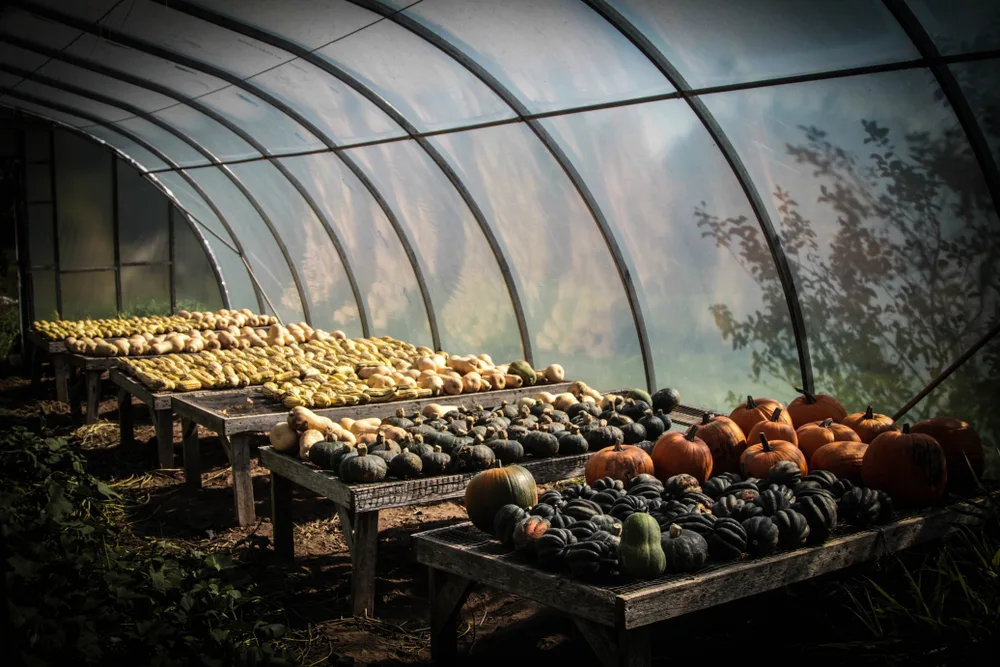
Growing some shape or size of pumpkin is easy enough. Getting them to grow huge is another weight category entirely.
So, what does it take to grow a large pumpkin?
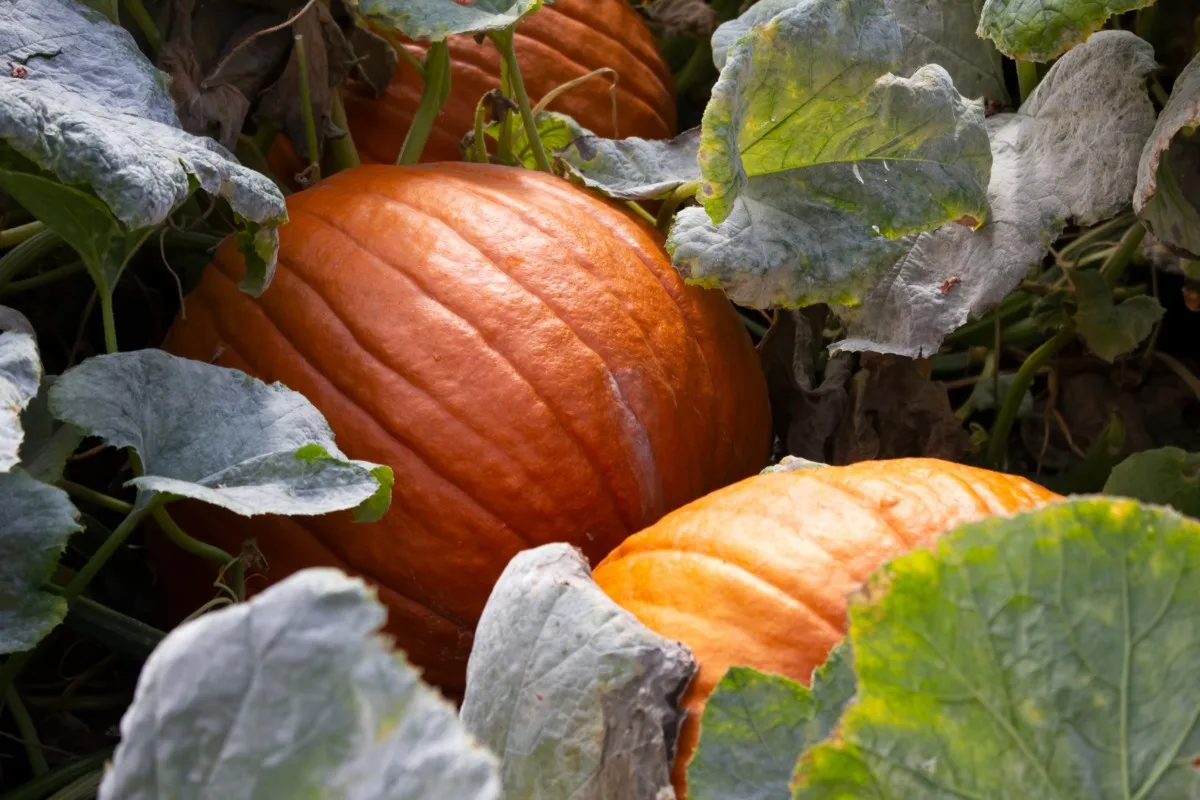
First of all, you need to start with good quality seeds of the correct variety. Not all pumpkins have the ability to grow to a tremendous size. We’ll offer up some large varieties of pumpkins to try later on in this article.
Secondly, your pumpkins need to have a good head start. Nourish them well from the beginning and they will develop solid roots.
Thirdly, pumpkins need plenty of room to extend outwards. And grow outwards they will, some vines trailing as far as 25 feet!
And then comes talk of fertilizing pumpkins. It’s an absolute must.
When we talk about huge harvests, we often think of a prize-winning gigantic pumpkin, one which can exceed 2,000 pounds.
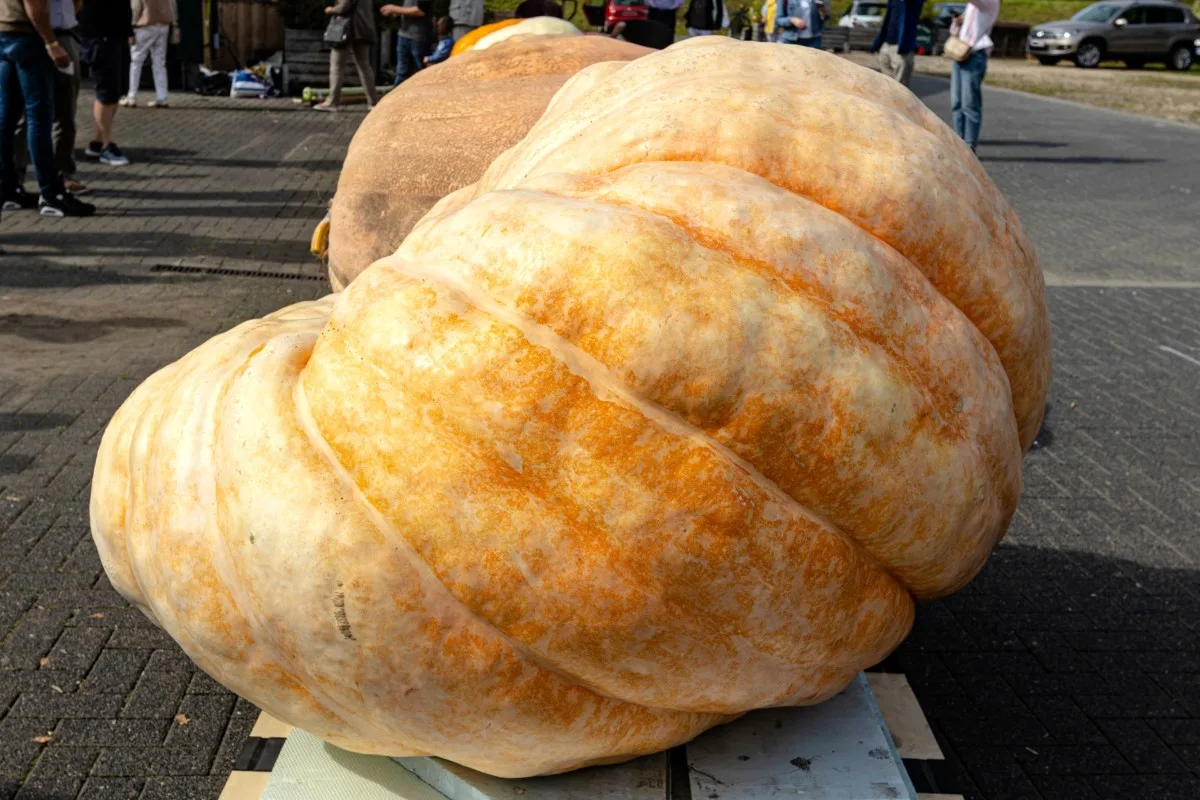
We aren’t setting our sights that grand here, though we do want huge harvests. So, let’s take some cues from the pumpkin growing masters and apply their tips in our own gardens.
Even if you get a pumpkin weighing 40 pounds, you could consider that a huge success.
However, larger pumpkins have less flavor and a ton of seeds. That’s definitely something to consider in the quest for going big.
You’ll need to use your best judgement when applying fertilizer, but that’s not all. In order to grow a large pumpkin, or lots of medium-sized tasty pumpkins, you’ll also need a generous piece of land and plenty of water.
How Long Do Pumpkin Seeds Take To Germinate?
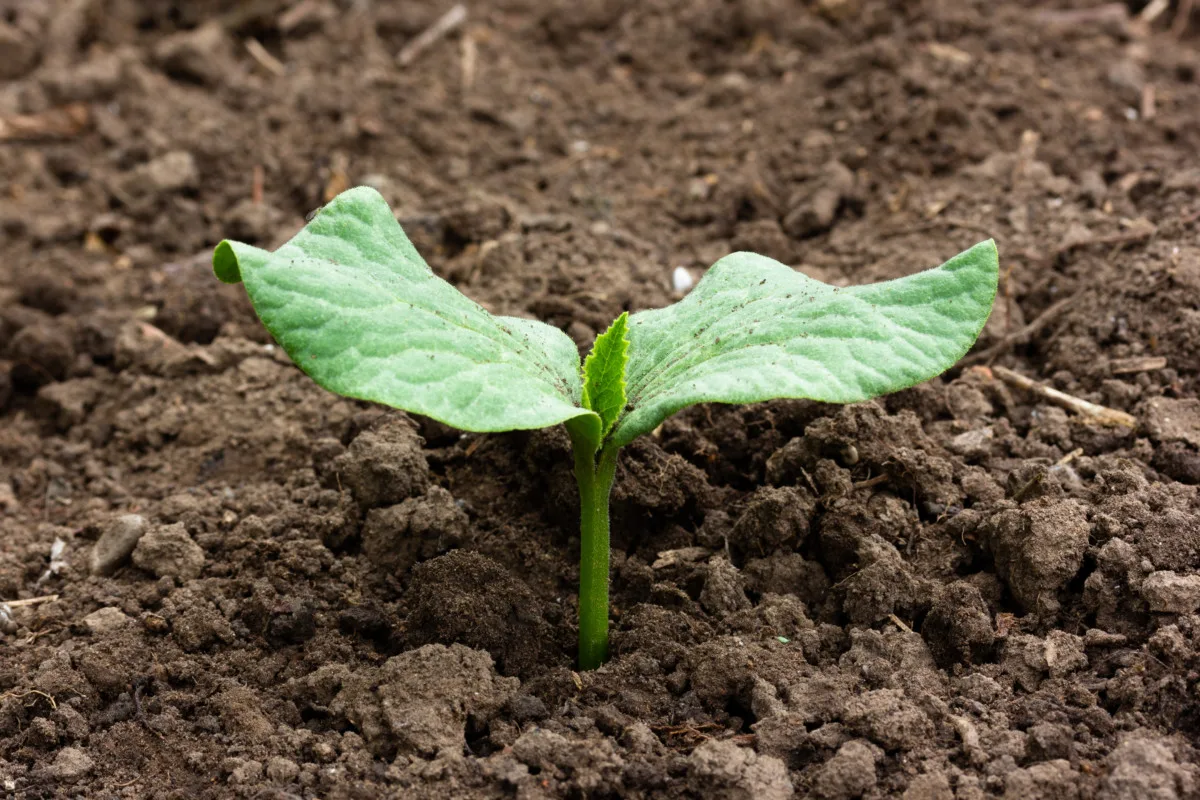
Before planting, it’s useful to know how long pumpkins take to germinate. The time of planting is super important because they take 90-130 days to reach maturity. How’s that for a long growing season?
Pumpkins take a week to ten days to germinate. If they haven’t sprouted up by that time, you need to resow a new set of seeds. Or buy some transplants if planting time is running out.
Plan your pumpkin planting for when the temperatures are just right. If direct planting outside, daytime temperatures should reach 70 to 95°F (21 to 35°C), but you can easily start plants in pots as well for an earlier start to the growing season.
The trick to getting them to develop strong roots is a combination of soil quality, sunlight and sufficiently well-watered, warm soil.
How Much Space Do You Need To Grow Pumpkins?
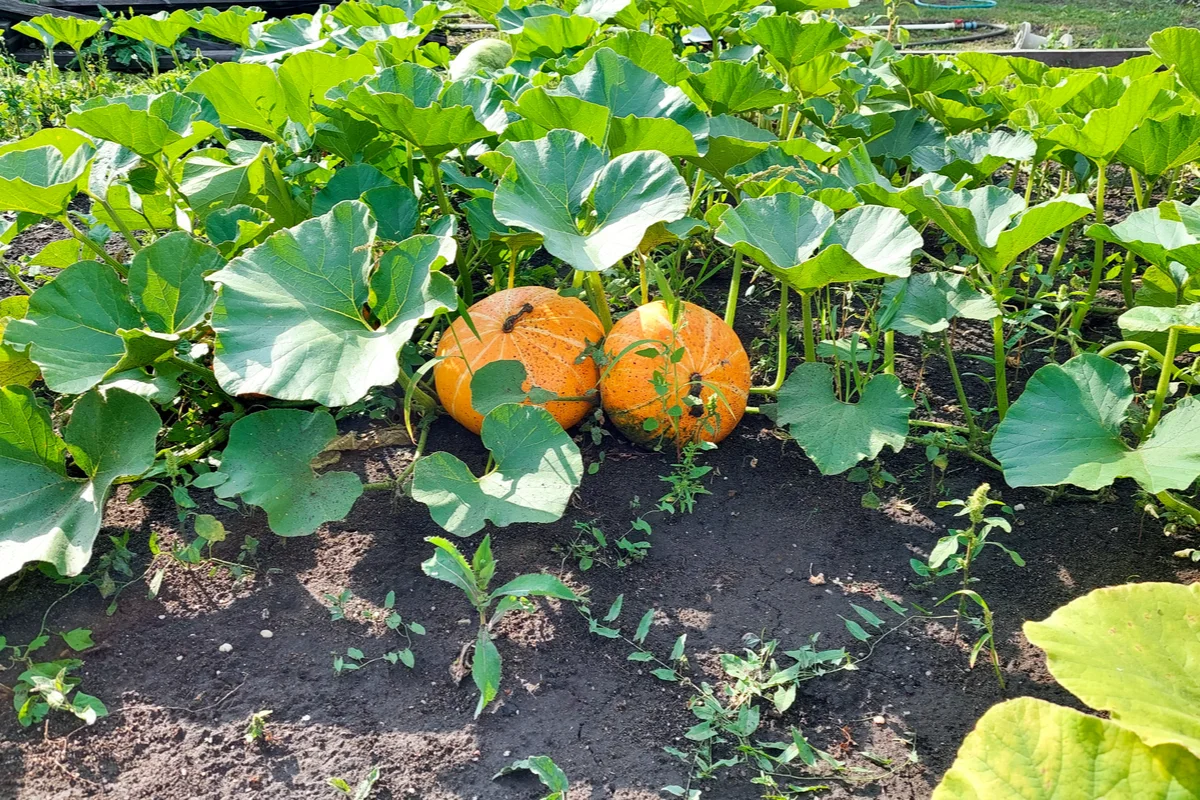
In order to harvest good-sized pumpkins, you’ll also need to give them plenty of space in full sun. We’ll touch upon this again, when talking about why you shouldn’t plant pumpkins too close together. But for now, what you need to know is that, in the most ideal situation, pumpkins prefer 100 square feet per plant.
If you don’t have that much garden space to dish out, opt for a smaller pumpkin variety, such as Bumpkin, Baby Boo, Half Pint, Jack-Be-Little or Midnight.
Get your pumpkin seeds in the ground by May in northern states; plant by early July in southern states.
Tips For Growing Your Biggest Pumpkins Ever
Fertilizing Pumpkins Is Important, But It’s Not The Only Thing
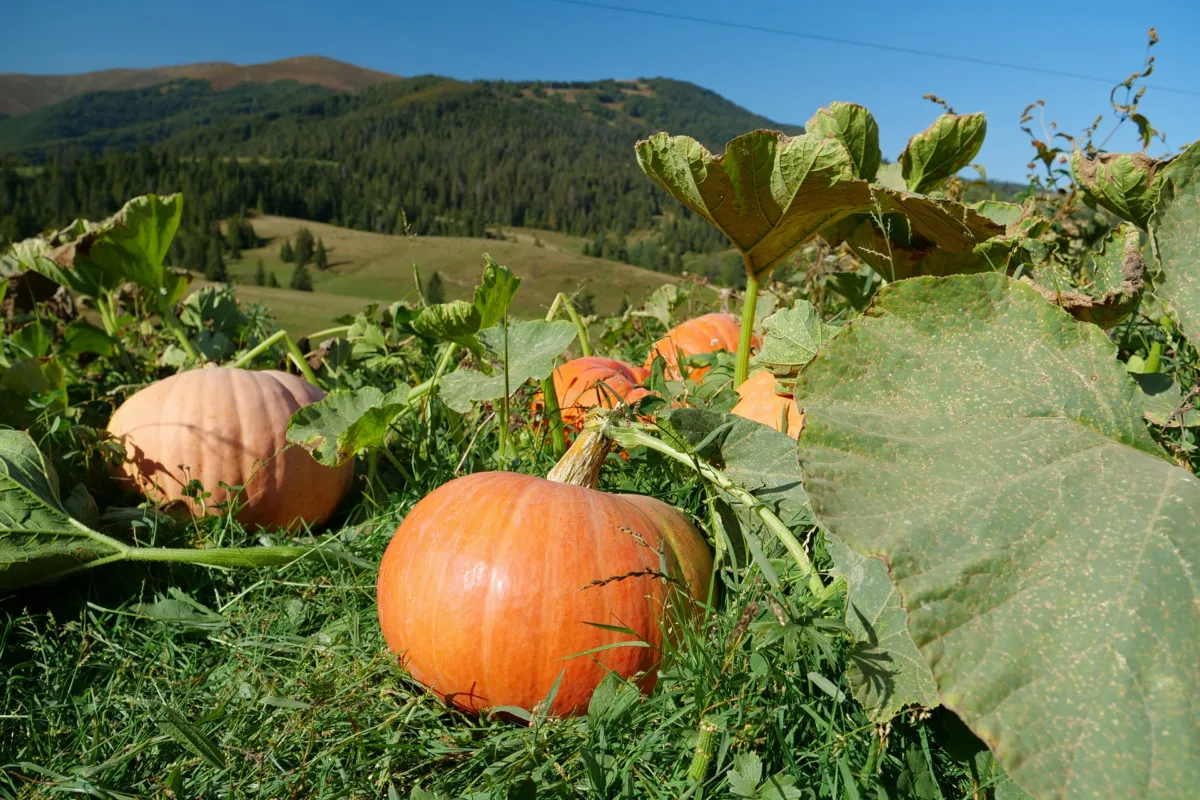
Pumpkins are very vigorous growers, even more so than tomatoes or corn. They need a lot of space, a ton of water and a flowing supply of fertilizer if you want to harvest more than a decoration.
Fertilizing your pumpkin patch is extremely important because it encourages strong root development, as well as boosts flower and fruit production. As with any garden plant, you’ll need to find a good balance of nitrogen, phosphorus and potassium.
Here’s how you can get the most out of the pumpkins growing in your own garden:
1. Remove most flowers and fruits.
This all depends on your pumpkin harvesting goals, but at some point you need to decide whether you want one large pumpkin per vine, or you’d be happy with two or three smaller, more manageable sized pumpkins.
Since every female flower has a chance of becoming a pumpkin, you’ll want to check on the progress of developing fruits after the first blooms appear. If you leave them all to chance, you might end up with a lot of smaller pumpkins.
All you need to do to correct this, is to pull off any excess flowers or fruits by hand.
2. Hand-pollinate the pumpkin flowers.
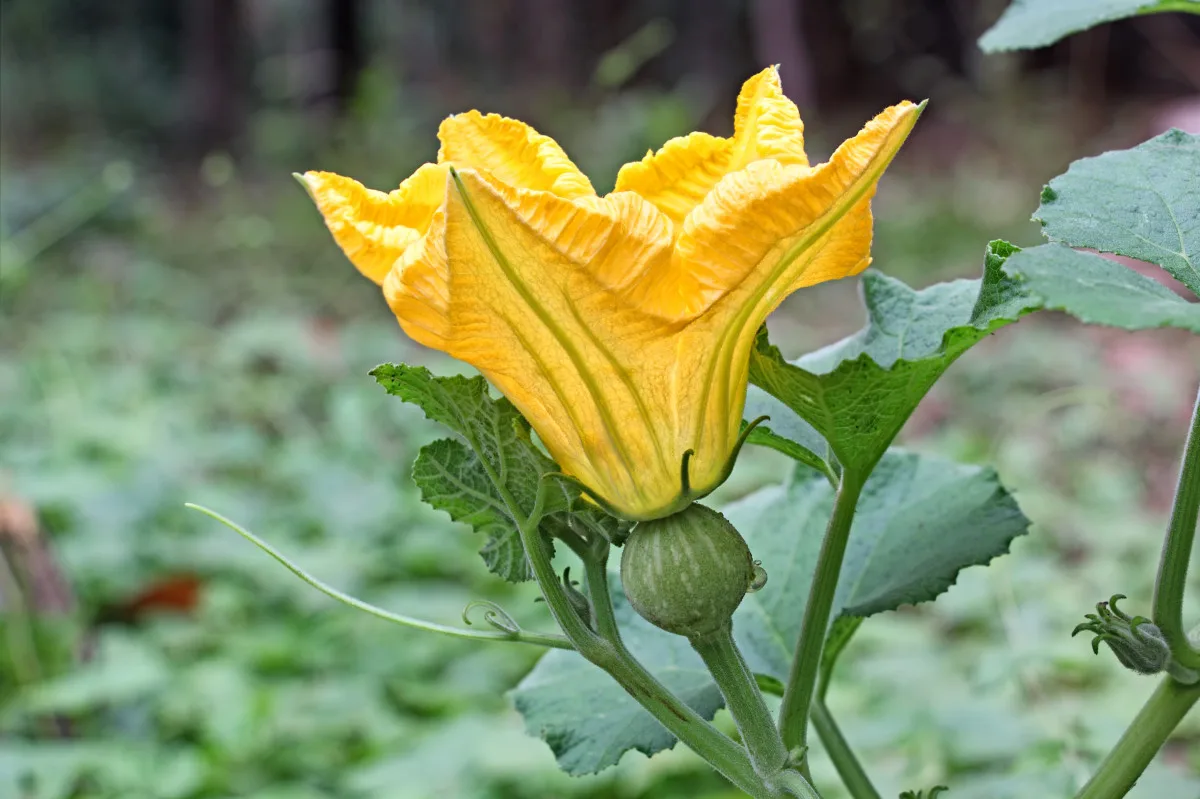
Pumpkin blossoms are normally pollinated by insects. With a decline in insect numbers, you can never be too sure that your plants will receive enough attention from nature. If you don’t have enough pollinators in your garden, consider adding more garden plants to attract bees, butterflies and insects.
Outside of that, hand-pollinating is the answer. Here’s a picture-filled tutorial on how you can hand-pollinate squash and pumpkins in 30 seconds. It’s a fantastic garden skill to learn.
Hand-pollinating is easy enough. Pull off the petals of the male flowers to expose the pollen covered stamen, and dab it on the female pistil. If you’d rather, you can also use a cotton swab or an old paintbrush to transfer the pollen from the male to female flower.
3. Do not plant pumpkins too close together.
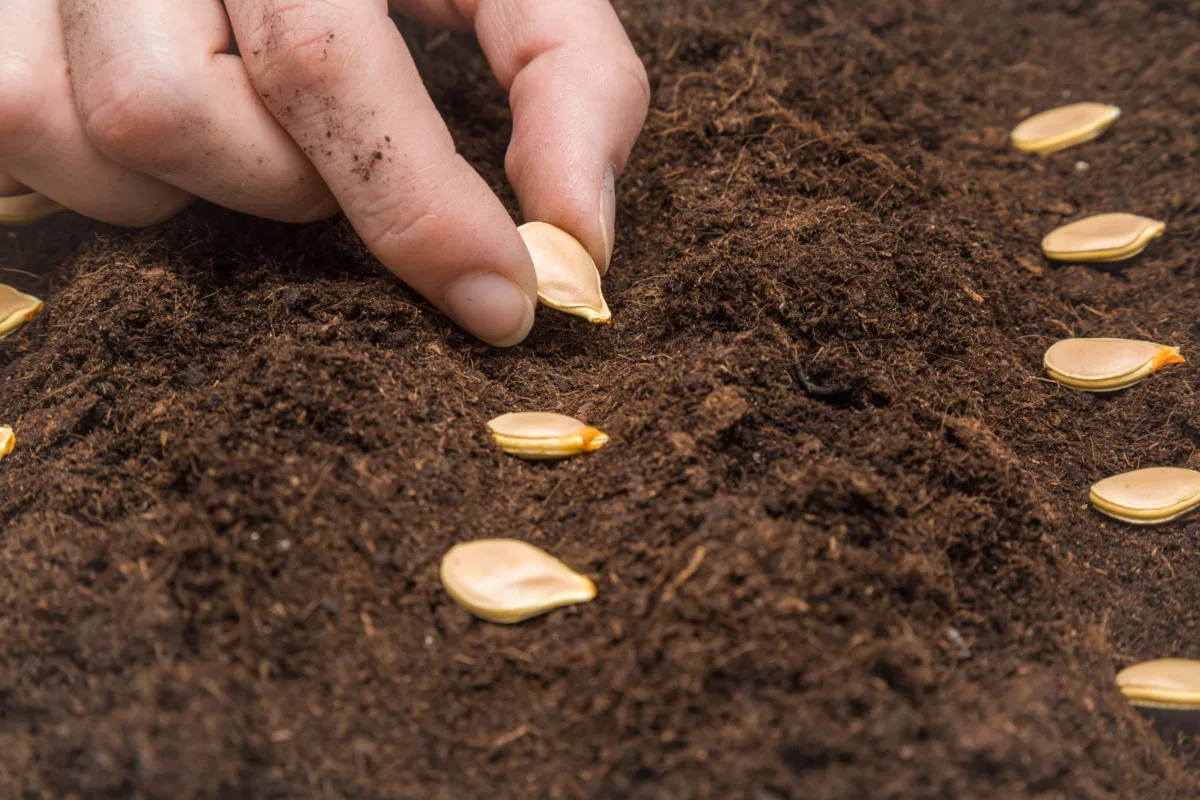
I know, it’s easy to get carried away when planting pumpkins. To see so much open space almost calls for sowing more seeds, or bringing the nests closer together to fit in as many plants as possible. As with the case of most garden vegetables, there are spacing guidelines for good reasons.
When you plant pumpkins too close together, there will be competition for nutrients, water and sunlight. In the quest to be the biggest, they will consume all three with gusto.
Overcrowding stresses the pumpkins, and you don’t want that to happen. If they do become overtaxed, the plants may drop their flowers or fruits, resulting in a smaller harvest.
Large varieties of pumpkins require a minimum distance of 6-8′ apart between nests. Rows should be 6-10′ apart. The planting distance varies between cultivars, always read the planting recommendation on the back of the package.
4. Fertilize pumpkins – more than once!
You don’t need chemicals to grow a lush garden. What you do need to do, however, is inform yourself about organic fertilizers. That will definitely put you on the path to bigger pumpkins and larger harvests overall.
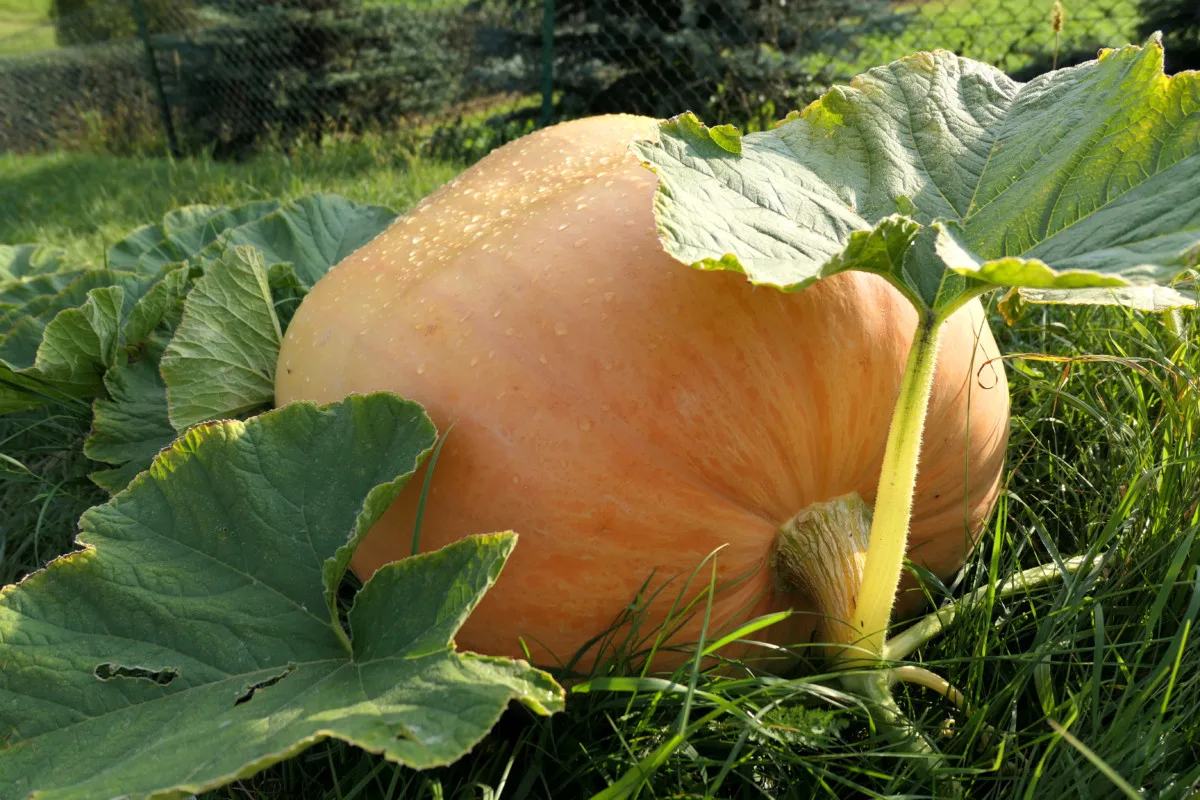
So, if you want huge pumpkin harvests, every two weeks you must fertilize your pumpkin patch with a compost tea, decomposed manure or organic fertilizer. You may already have some fertilizer on hand, take a quick read through the list and see.
Fertilize pumpkins in the early stages:
In the very beginning, you’ll want to apply any organic, nitrogen-rich fertilizer. This starts the plant off right as it encourages leaf and stem growth.
Manure Tea – well-rotted manure is a nice slow-release fertilizer that nourishes your garden with plenty of nitrogen and potassium. You can apply it like a liquid compost tea.
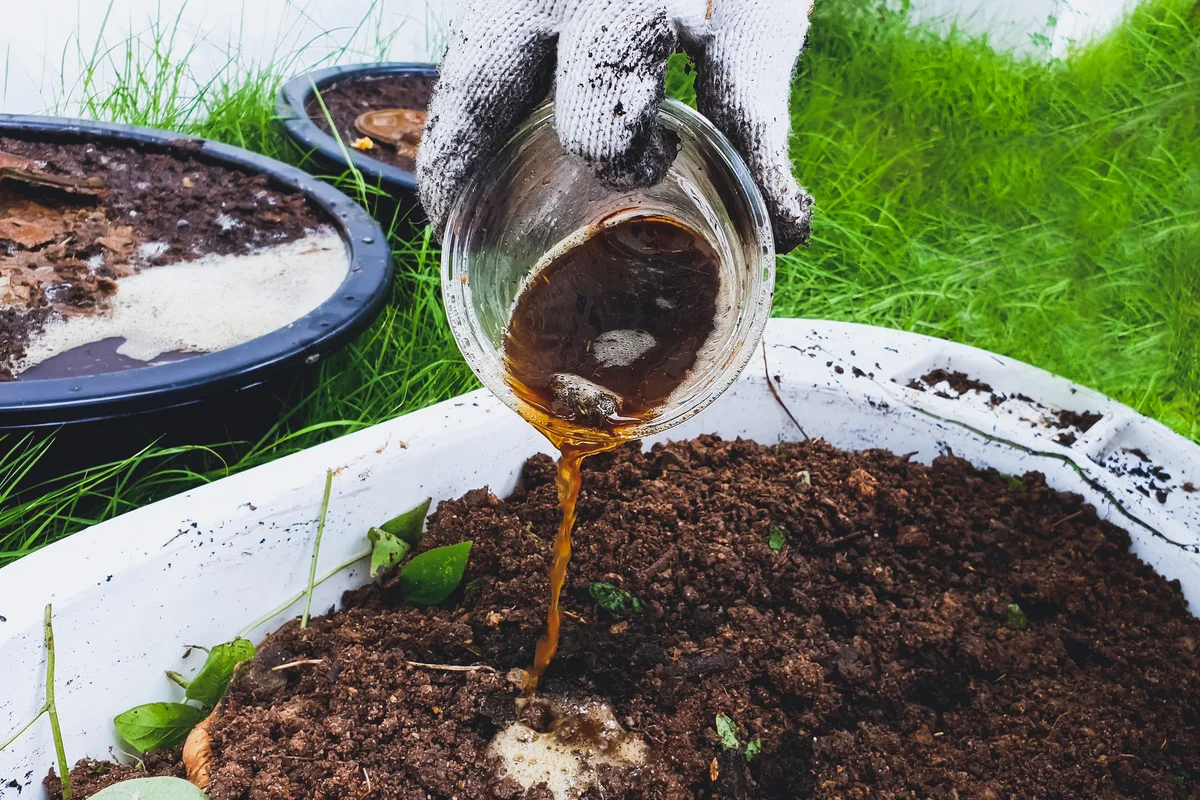
Blood Meal – if you’ve tested your soil and found that it’s lacking in the nitrogen department, consider adding some blood meal to give your growing medium a boost. Blood meal is highly concentrated; be sure to apply it according to the instructions on the package.
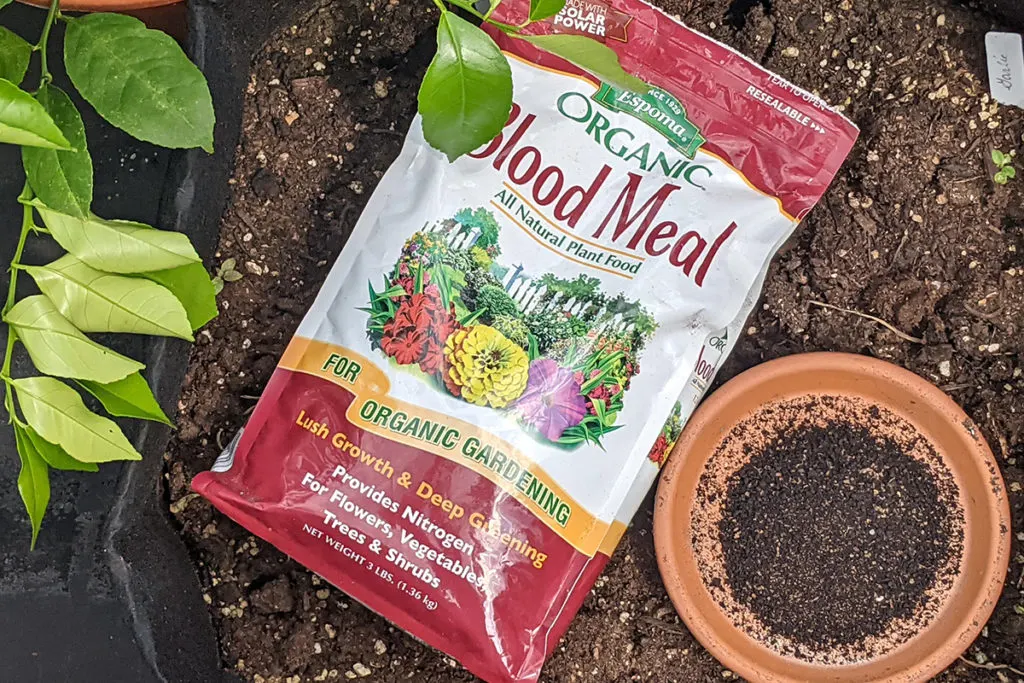
Fertilize pumpkins once they begin to flower:
Once pumpkins begin to flower, they need more phosphorus.
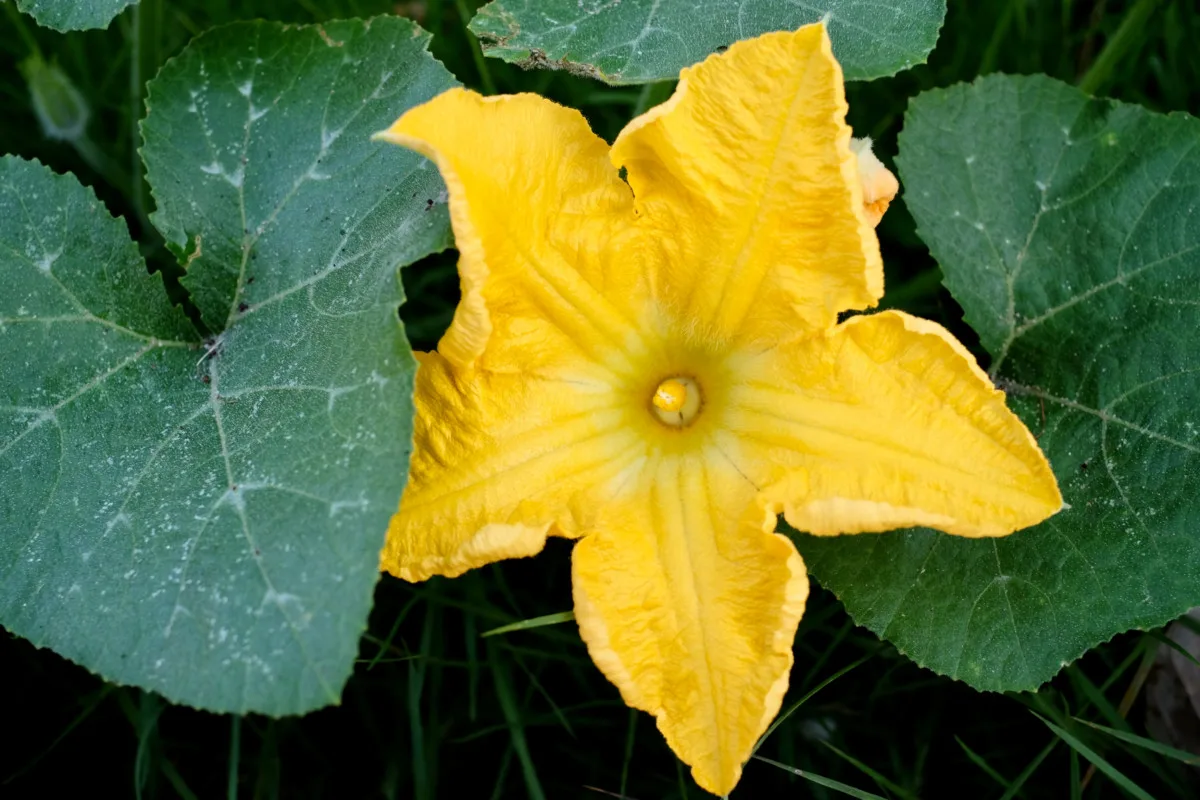
With too little phosphorus in the soil, plants may produce fewer blooms. If you notice this across your entire garden, take note, then fertilize more than just your pumpkins. Chicken manure and bone meal are two great choices for getting more phosphorus to your plants.
Chicken Manure – all manures have varying amounts of N-P-K. While composted chicken manure will still contain nitrogen, it also has higher levels of phosphorus. If you don’t raise your own chickens (yet), you can buy chicken manure pellets at your local farm store, or from this page on Amazon.
Bone Meal – like blood meal, bone meal is another excellent way to restore nutrients in the soil. Whether it be finely ground cow or fish bones, it doesn’t matter. It’s highly concentrated, so be sure to use it as recommended.
Fertilize pumpkins during the fruiting stage:
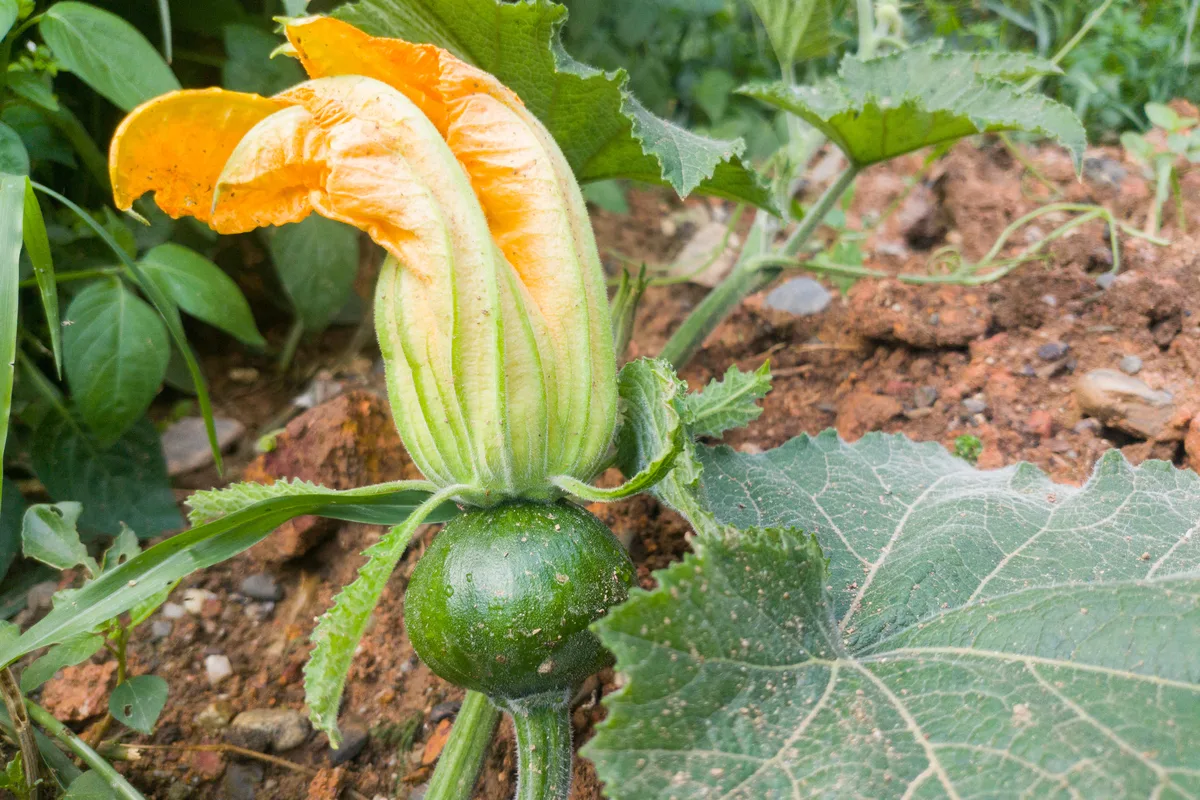
It’s so much fun to watch your pumpkins grow. Kids really love to see their Halloween pumpkins get bigger and bigger (be sure to involve them in some child-friendly gardening activities).
Once your pumpkins reach this “fun” stage, it’s time to give them a little extra potassium. Potassium helps the fruit regulate and store water and carbohydrates. This is particularly important if you want to be eating a lot of pumpkin pies.
Kelp or Seaweed – though not a local option for many gardeners, unless you live by the sea, seaweed does have its merits in the garden. It can be incorporated into a liquid fertilizer, or used as a mulch. If you live inland and can’t collect your own, there are plenty of places to buy organic seaweed online.
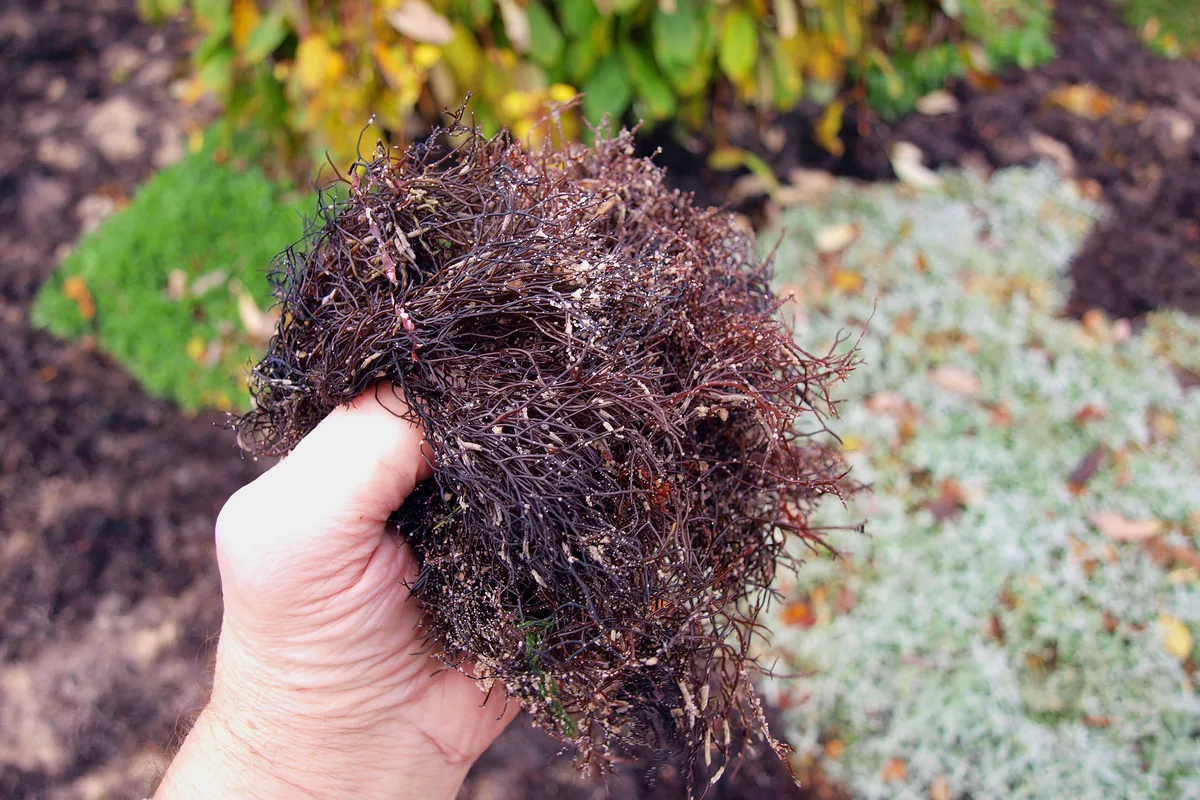
You can apply a composted seaweed mixture once a week when fruits begin to set.
5. Trim your pumpkin vines.
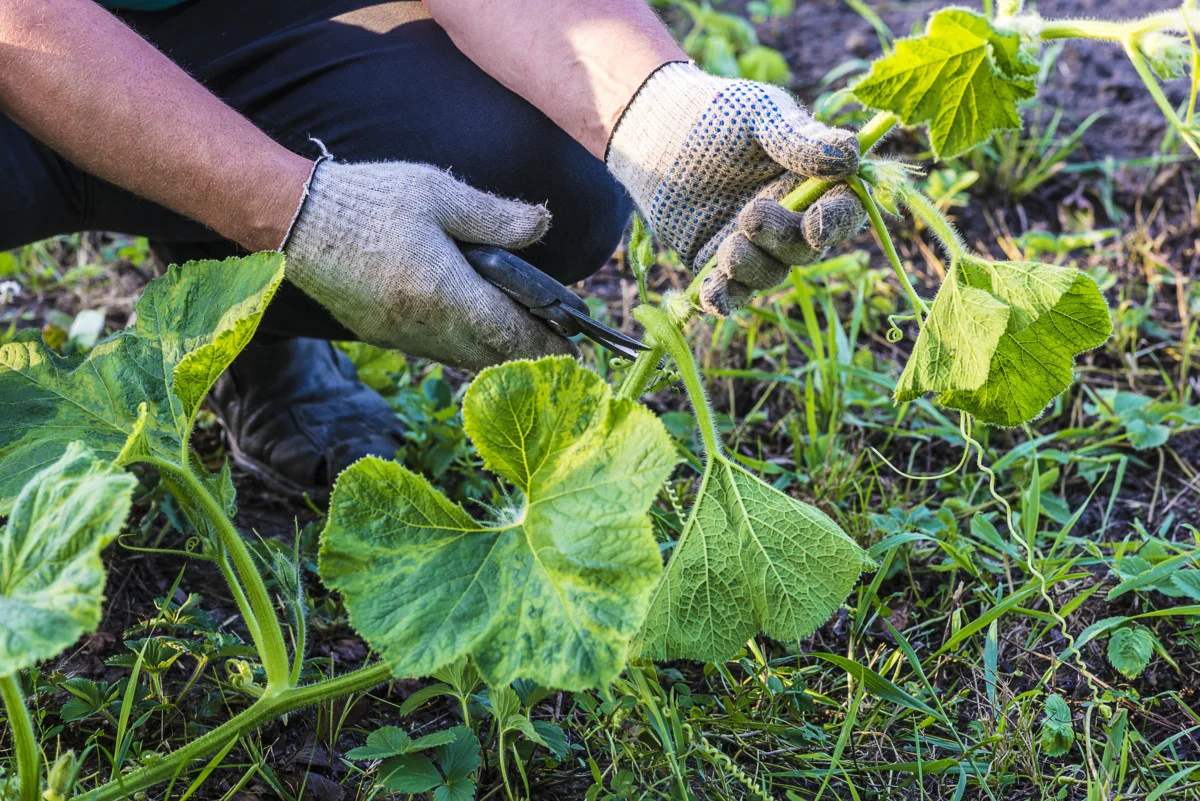
While it may be unnecessary to trim pumpkin vines, some people do it anyway. Pruning back the vines helps to keep the canopy open and airy; free of powdery mildew and other diseases.
Trimming back the leaves also comes in handy if you happen to notice a fungal infection. Simply cut away the infected leaves and let your vines carry on.
Here’s some more advice on trimming your own pumpkin vines.
Last of all, you’ll want to keep your pumpkin patch as weed-free as possible. Don’t forget to put down some mulch to keep the soil moist and the weeds at bay.
Best Pumpkin Varieties For Huge Harvests
Size is relative, especially when it comes to growing pumpkins. You probably wouldn’t want to carve a hundred-pound pumpkin. Nor would it be easy to eat up an XXL sugar pumpkin in one sitting. Don’t forget that larger pumpkins are characteristically less sweet, at the same time they tend to have more watery, stringy flesh. Sometimes smaller is better.
Before choosing a pumpkin variety for your garden, spend some time thinking about how you want to use your harvest.
While giant pumpkins are usually grown exclusively for bragging rights, we assume you are here to grow something that is also edible. Mid-size to big pumpkins are probably what you are after.
Mid-size Pumpkin Varieties
Casper – an all white pumpkin that is wonderful for decorating and for cakes and pies.
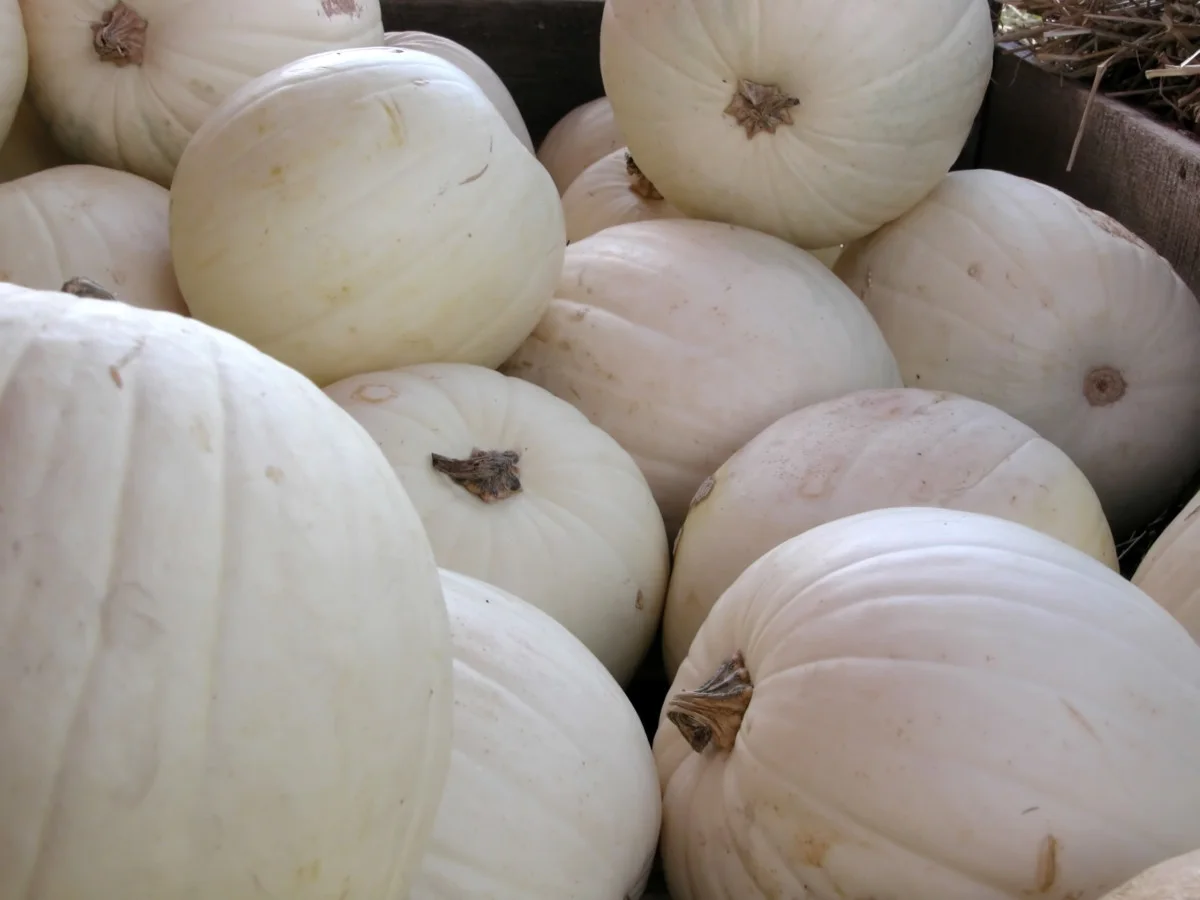
Jack Of All Trades – the perfect pumpkin for Halloween carving. 95 days to maturity.
Rouge Vif D’Etampes – also known as Cinderella, is a bright scarlet French pumpkin. Fruits average 10-15 lbs. and are shaped like a red cheese wheel. Decorative and tasty all in one.
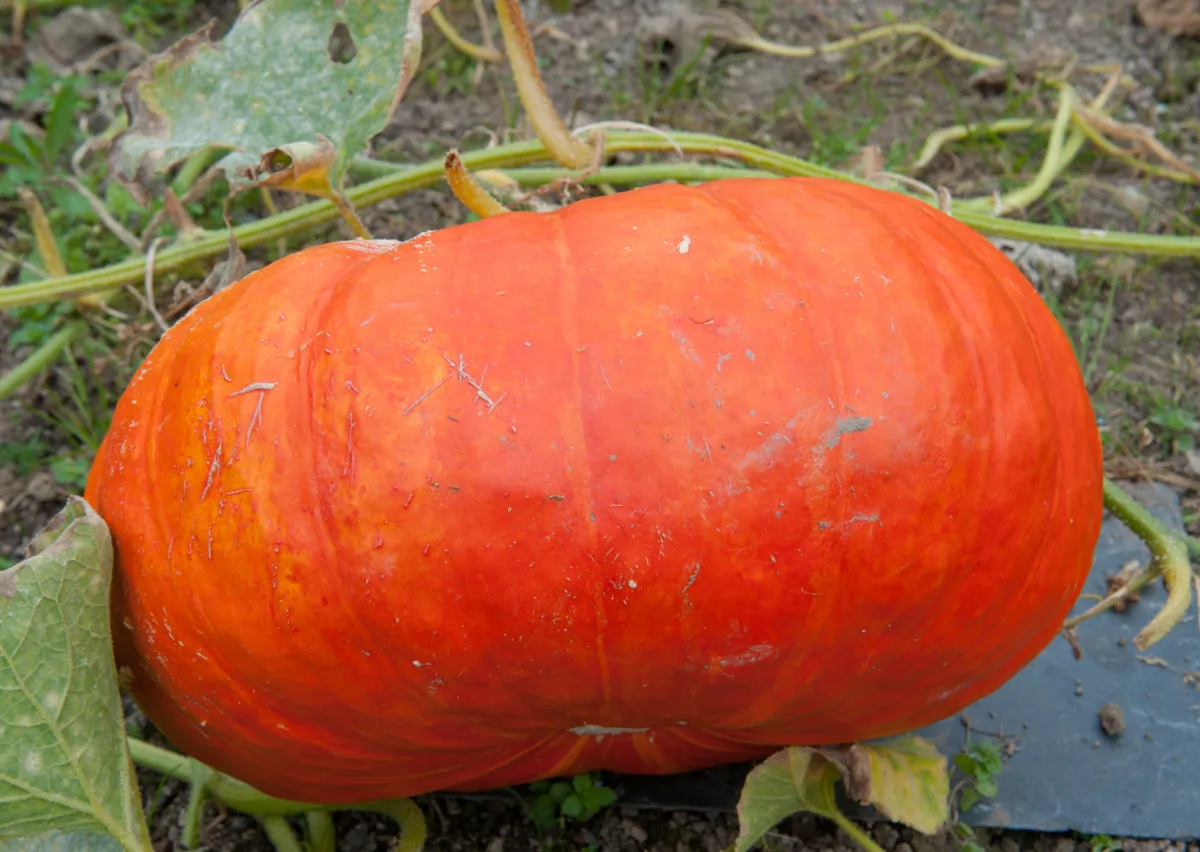
Big Pumpkin Varieties
Aladdin – a classic pumpkin that sets fruit to the tune of 25-35 lbs. per piece.
Early Giant – a reliably producing pumpkin with elongated fruits that average 30 lbs.
Full Moon – if you are looking to put your pumpkin growing skills on display, this enormous, white variety may be the one for you. 110-115 days to maturity.
Wolf – if you appreciate a good handle on your Halloween pumpkin, consider this variety. Fruits, on average, weigh in at 16-24 lbs.
A Few Last Pumpkin Growing Tips
We’d all like to think that growing a pumpkin is as easy as putting a seed in the ground and waiting till October to harvest a glowing, orange orb of carving delight. Then reality sets in and it seems a whole lot more complicated than that.
Try not to be overconcerned, pumpkins will still grow even without constant care.
In short, to ensure that you’ll have huge pumpkin harvests:
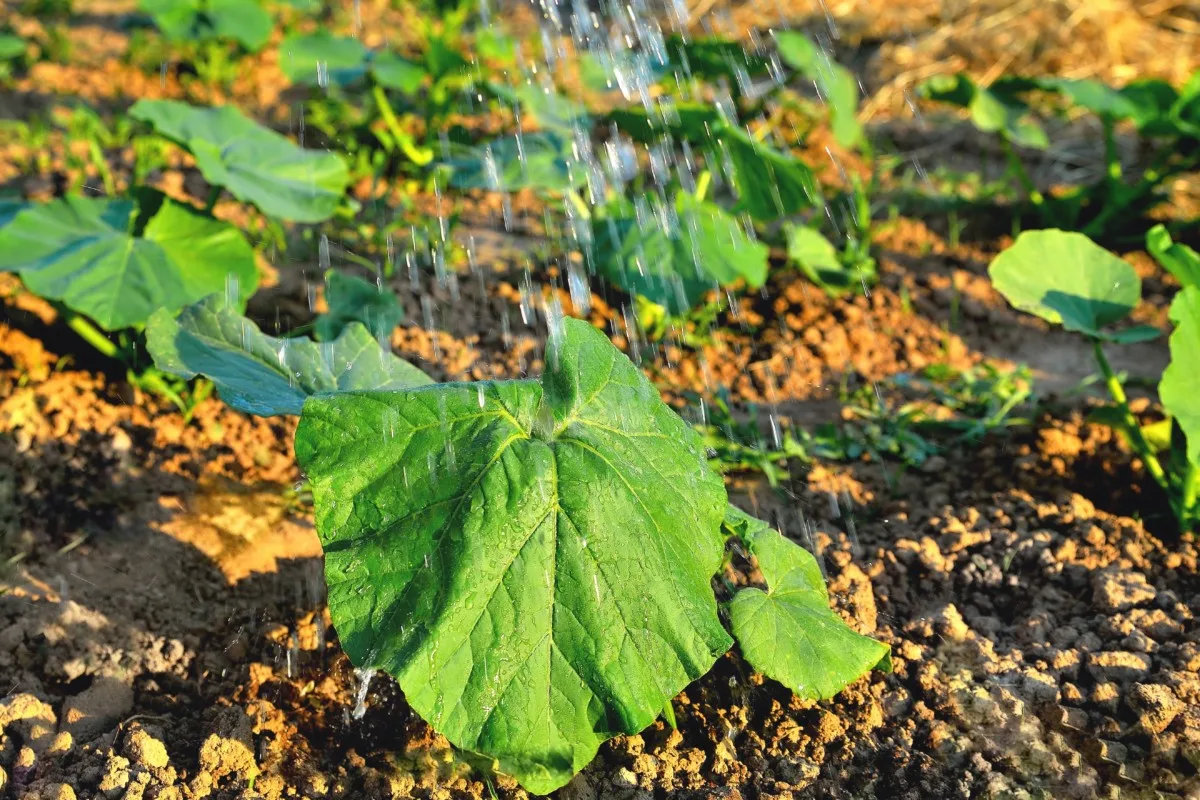
- keep your patch free of weeds to ensure good airflow between the large leaves
- water deeply, as close to the soil as you can get (don’t use overhead watering)
- use companion planting with your pumpkins and encourage pollinators to enter your garden
As important as it is to fertilize organically, be sure to not over-fertilize your pumpkins either.
Learn as you go, taking subtle cues from the plants. In no time at all, you’ll be out there harvesting the most beautiful crop of pumpkins you could ever imagine.
Read Next:

Get the famous Rural Sprout newsletter delivered to your inbox.
Including Sunday ramblings from our editor, Tracey, as well as “What’s Up Wednesday” our roundup of what’s in season and new article updates and alerts.


